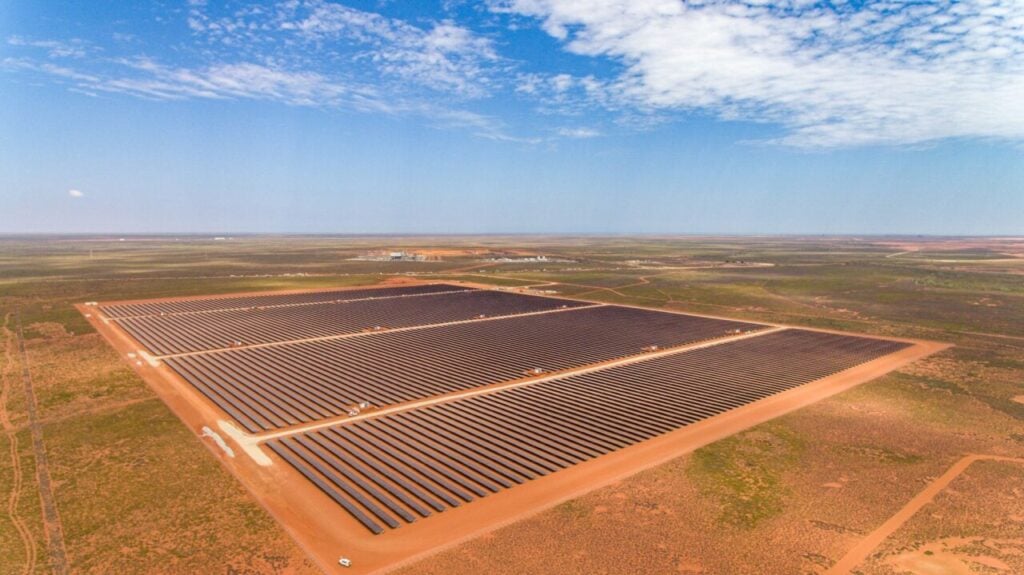
A new study has revealed that Western Australia’s Mid West region is “well-placed” to export green hydrogen and its derivative, ammonia, to Europe, owing to the area’s vast solar PV resources.
According to the Trilateral Hydrogen Hub Feasibility (TrHyHub) Study, a joint initiative between the State government, Mid West Ports Authority, the Netherlands’ Port of Rotterdam, and Germany’s Fraunhofer Institute for Solar Energy Systems, a clean energy supply chain for hydrogen could be developed between the region and Germany.
Try Premium for just $1
- Full premium access for the first month at only $1
- Converts to an annual rate after 30 days unless cancelled
- Cancel anytime during the trial period
Premium Benefits
- Expert industry analysis and interviews
- Digital access to PV Tech Power journal
- Exclusive event discounts
Or get the full Premium subscription right away
Or continue reading this article for free
The techno-economic analysis from the TrHyHub study examined an ammonia supply chain from Oakajee to Germany. It revealed that the long distance from Australia to Europe contributes only 9% to the total cost of producing and delivering the products, making it a relatively insignificant cost factor.
Interestingly, the higher shipping costs are balanced out by the abundant solar and wind resources available at Oakajee, significantly reducing the costs of producing and storing hydrogen. This could help make the hydrogen cost-competitive with other regions that want to export to the European Union (EU) market.
This could be a huge economic opportunity for Australia to capitalise on the EU’s hydrogen import target. Detailed within the REPowerEU Strategy, released in 2022, the EU is aiming to produce 10 million tonnes and import 10 million tonnes of green hydrogen by 2030.
The study supports the development of the Oakajee Strategic Industrial Area (SIA), which could become home to the Mid West Hydrogen Hub, a large-scale hydrogen production and exportation facility.
Included within the plans for the Mid West Hub is a clean ammonia export project that will produce up to one million tonnes of clean ammonia per year. This will be achieved through the production of up to 175,000 tonnes of hydrogen annually, with a targeted production start date in 2029. The electrolyser used to generate the green hydrogen will be powered by solar PV and wind energy.
A geographic information system analysis conducted as part of the TrHyHub study showed that the land within a 350km radius of the Oakajee SIA has significant potential for large-scale renewable energy generation, predominantly through solar PV. This capacity could support the production of millions of tonnes of hydrogen per year.
However, the report states that achieving this level of hydrogen production will require considerable time and collaboration among all involved parties; even a fraction of this theoretical output could meet a substantial portion of Europe’s hydrogen demand by 2050.
Australia’s eyes hydrogen export opportunity
The Australian government has made no secret of its ambitions regarding hydrogen and how the country could leverage its clean renewable energy resources to produce the clean energy carrier and export it to lucrative future markets such as Europe, the US, and Asia. This has been cemented via the country’s updated 2024 version of its National Hydrogen Strategy.
The strategy states that the global hydrogen market is forecast to reach US$1.4 trillion in 2050, and that Australia is well-placed for export and manufacturing opportunities.
A key inclusion within Australia’s updated hydrogen strategy is the decision to implement a 2030 hydrogen export target, which it hopes will “provide a strong signal of Australia’s intention to continue supplying energy to the global market”.
Indeed, Australia aims to hit a base export target of 0.2 million tonnes of green hydrogen per year by 2030, with a stretch potential of 1.2 million tonnes per year. The strategy matches some of Australia’s key trade partners already with 2030 hydrogen targets.
Several key developments have occurred in recent years within the Australian hydrogen market, aided by the right incentives for international investment. For instance, in 2022, energy major BP confirmed it would acquire a 40.5% stake in and become the operator of a green hydrogen project in Western Australia that could feature up to 26GW of solar and wind when complete.
Australian mining giant Fortescue Metals Group, an international advocate for hydrogen, started developing a US$50 million project in Western Australia last year. The project aims to harness solar PV to produce green hydrogen, which will be used to create green metals.
Aboriginal communities could also benefit from hydrogen, with the Aboriginal Clean Energy Partnership having reached agreements in July 2023 to develop a green hydrogen production facility in Western Australia powered by a 900MW solar PV plant.






